Adler69
Master sergeant   Legio Patria Nostra
Legio Patria Nostra
Posts: 2,859
|
Post by Adler69 on Jul 1, 2009 0:06:33 GMT -5
Both sides of the War used Armor during the war , it was one of the first all out wars that would see Armor against Armor battles.
The Spanish civil war was used as a testing ground for modern warfare by the countries in Europe.
The Nationalist Forces , under the command of General Franco and backed by Germany and Italy had the following Vehicles in their inventory
German PzKpfw I
German PzKpfw II
Italian Carro Veloce CV33
Italian Lancia Ansaldo IZM
Spanish Nationalist T-26
German SdKfz7
Spanish Nationalist BT-5
Spanish Nationalist Komintern Prime Mover
US Chevrolet trucks
Photos of this vehicles tomorrow , i have to search my collection of Photos .
|
|
Adler69
Master sergeant   Legio Patria Nostra
Legio Patria Nostra
Posts: 2,859
|
Post by Adler69 on Jul 1, 2009 13:53:05 GMT -5
German PzKpfw I 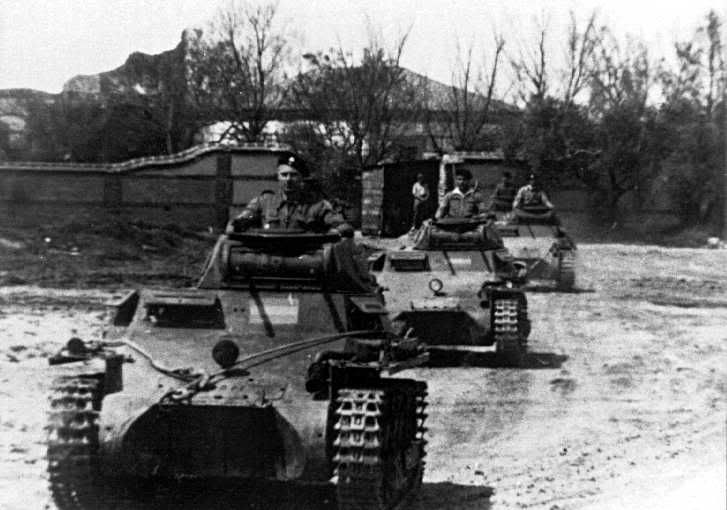 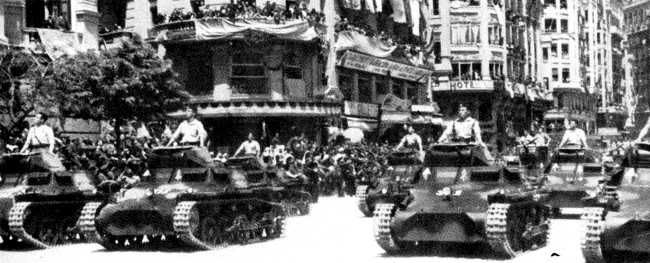 German PzKpfw II 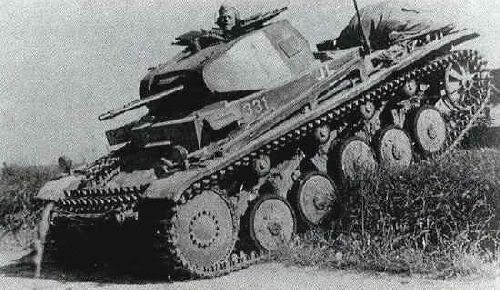 Italian Carro Veloce CV33 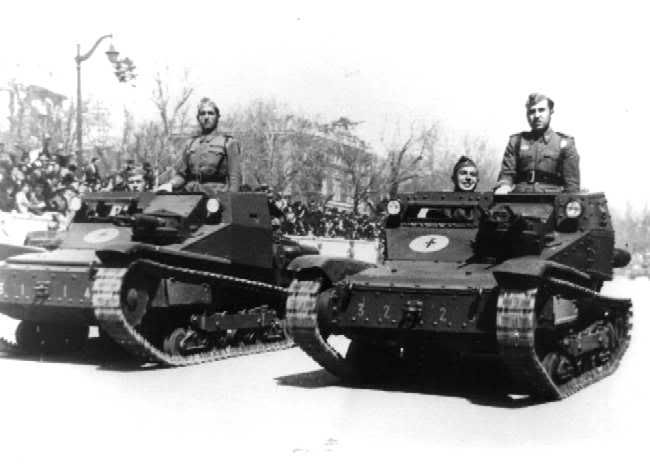 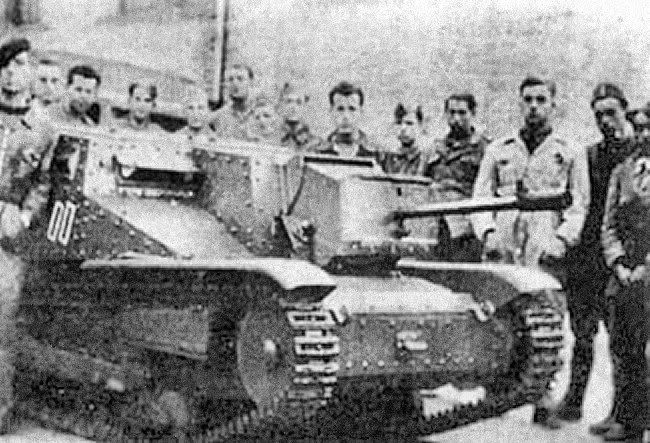 Italian Lancia Ansaldo IZM 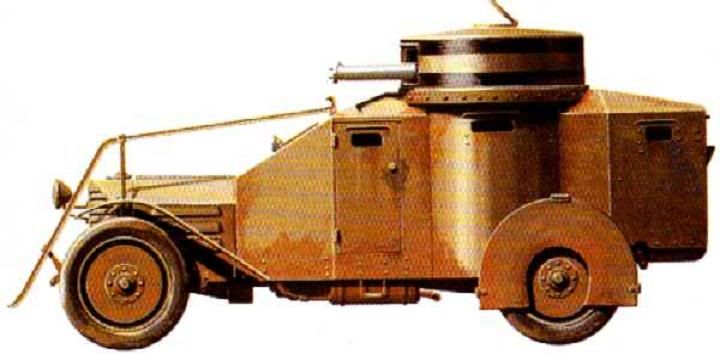 Spanish Nationalist T-26 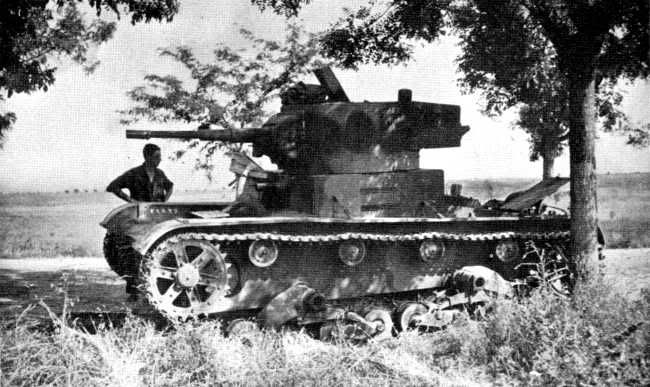 German SdKfz7  Yes they are towing 88s , they where used as AA , no one knew that they could be used as Anti Tank weapons until much later. Spanish Nationalist BT-5 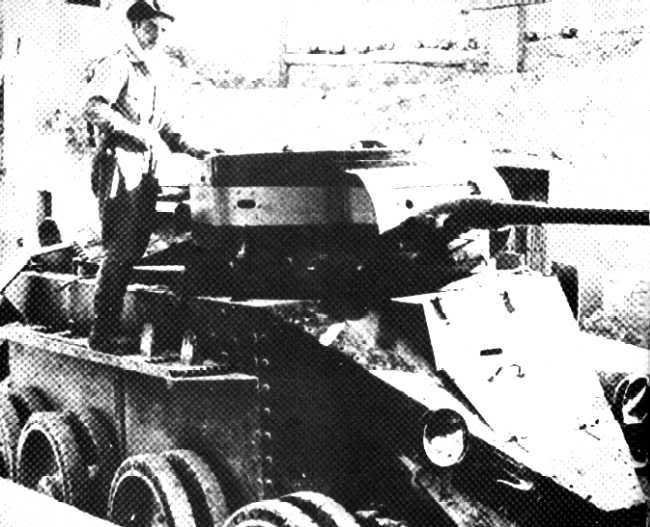 Spanish Nationalist Komintern Prime Mover  i242.photobucket.com/albums/ff22/Adler69_photo/Komintern_1b.jpg i242.photobucket.com/albums/ff22/Adler69_photo/Komintern_1b.jpgUS Chevrolet trucks 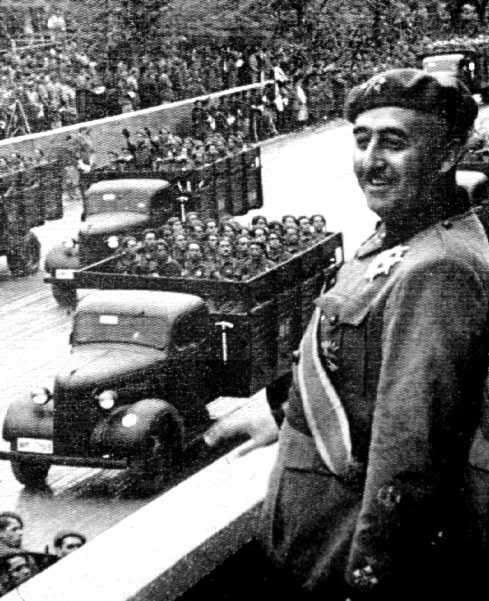 |
|
|
|
Post by tw4449 on Jul 1, 2009 23:48:53 GMT -5
A question:
The T-26, BT-5 and Komintern are all Soviet vehicles, and the Soviets supported the Republicans, not the Nationalists. So, I'm assuming that the examples you've pictured are vehicles captured from the Republicans and are being used by the Nationalists?
|
|
Adler69
Master sergeant   Legio Patria Nostra
Legio Patria Nostra
Posts: 2,859
|
Post by Adler69 on Jul 1, 2009 23:54:33 GMT -5
Yes , they where captured repaired if needed and turned right around to fight the Republicans.
I have a list somewhere that shows exactly how many tanks the Soviets sent to Spain , i will look for it and post it later on.
|
|
|
|
Post by tw4449 on Jul 1, 2009 23:57:49 GMT -5
I know it's somewhere in the neighborhood of 900... but that list would definitely be helpful.
|
|
Adler69
Master sergeant   Legio Patria Nostra
Legio Patria Nostra
Posts: 2,859
|
Post by Adler69 on Jul 2, 2009 0:07:26 GMT -5
Here it is
Soviet Tank Shipments to Spain
Date of Arrival Ship Quantity Type
12 Oct 36 Komsomol 50 T-26 light tank
25 Nov 36 Cabo Palos 37 T-26 light tank
30 Nov 36 Marc Caribo 19 T-26 light tank
6 Mar 37 Cabo Santo Tomas 60 T-26 light tank
8 Mar 37 Darro 40 T-26 light tank
7 May 37 Cabo Palos 50 T-26 light tank
10 Aug 37 Cabo San Agustin 50 BT-5 fast tank
13 Mar 38 Gravelines 25 T-26 light tank
|
|
|
|
Post by Gordak on Jul 10, 2009 10:04:38 GMT -5
the T-26 was the tiger tank of that war, It often devistated the opposition.
However, Stalin caused the infighting that lead to the defeat of the Republicans.
-Gordak
|
|
|
|
Post by Fusilier on Jul 11, 2009 8:51:04 GMT -5
Boy,that Pzkw I looked pretty useless huh? Made those early Soviet tanks look like tigers! the Pz II wasn't much better. Hell,some of the French tanks outclassed a lot of early German models in 1940. Good thing for the Germans the French had no idea how to use their tanks to their full potential.
|
|
Lev
Private 1st Class

Posts: 454
|
Post by Lev on Jul 15, 2009 13:18:19 GMT -5
German armor was outclassed during most, if not all, of the war. Even the legendary Tiger line of tanks, technologically speaking, were nothing to write home about. The Tiger I was essentially an up-armored Pz IV with an 88 mm gun. Yes, they did have good optics, but German armor production was utterly feeble compared to the allies. I've heard it speculated that the Germans lost more Tigers and Panthers to mechanical failure than enemy combat...it's never a good idea to create a tank so big that you have nothing to tow it with.
The T-34 and the Sherman, from a macro-level perspective, were the best tanks of the war.
|
|
gadge
Corporal
 
Posts: 1,199
|
Post by gadge on Jul 17, 2009 4:32:59 GMT -5
Its probably true, initial jagdpanthers coudl do about 40k before seizing up.
After the war the British Army got ten panthers for trials and brewed up eight of them starting them up until a POW from a camp was brought over to show them how to do it. Apparently if you dont stall the panther in gear when you stop it it can cause fuel to wash back, igniting when you start it up.
Armour is about firepower, protection and mobility.. you need a good balance of all three to be effective. A huge gun and 2 foot thick armour is as good as a chocolate tea pot if you stall every ten yards or your engine seizes up.
It had to be skid turned apparently too as faulty steering mechanisms caused it to throw tracks too easily.
I was told this from a guy who worked at bovington tank museum and had been a tank commander for eight years.
The POW veteran told them they 'fought the tank' all the time.
|
|
|
|
Post by Fusilier on Jul 17, 2009 6:36:10 GMT -5
Its probably true, initial jagdpanthers coudl do about 40k before seizing up. After the war the British Army got ten panthers for trials and brewed up eight of them starting them up until a POW from a camp was brought over to show them how to do it. Apparently if you dont stall the panther in gear when you stop it it can cause fuel to wash back, igniting when you start it up. Armour is about firepower, protection and mobility.. you need a good balance of all three to be effective. A huge gun and 2 foot thick armour is as good as a chocolate tea pot if you stall every ten yards or your engine seizes up. It had to be skid turned apparently too as faulty steering mechanisms caused it to throw tracks too easily. I was told this from a guy who worked at bovington tank museum and had been a tank commander for eight years. The POW veteran told them they 'fought the tank' all the time. "Fighting" your fighting vehicle when you're supposed to be fighting the enemy is never a good thing! The Germans were famous for making overcomplicated weapons and tanks. Case in point their semi auto rifles,the G41 and G43. Try breaking them down and cleaning them,and TRYING to reassemble them in a combat environment. It ain't happening! Too many small parts and tricky fitting getting them back together. That's the beauty of the AK series of weapons. Virtually anybody can maintain that weapon under ANY condition. |
|
|
|
Post by hairy apple on Jul 17, 2009 11:53:40 GMT -5
The Germans were famous for making overcomplicated weapons and tanks. Ever try working on a Jetta.... they still overcomplicate things. |
|
gadge
Corporal
 
Posts: 1,199
|
Post by gadge on Jul 17, 2009 12:27:04 GMT -5
A classic example is a BMW 750 combo, amazing vehicles but cost over five times the cost of a kubel to make.
|
|
|
|
Post by Fusilier on Jul 17, 2009 15:07:48 GMT -5
Yeah,anyone can own a Beemer or a Benz,its the mantenance people can't afford!
|
|
Cpl. Hicks
Sergeant
   Unofficial Flaggrantly Wrong Weapons Policeman
Unofficial Flaggrantly Wrong Weapons Policeman
Posts: 1,425
|
Post by Cpl. Hicks on Jul 17, 2009 18:04:14 GMT -5
The Germans were famous for making overcomplicated weapons and tanks. Ever try working on a Jetta.... they still overcomplicate things. lol, yeah I open mine up, look inside, and never want to touch anything. |
|
|
|
Post by Fusilier on Jul 18, 2009 21:22:12 GMT -5
Ever try working on a Jetta.... they still overcomplicate things. lol, yeah I open mine up, look inside, and never want to touch anything. That's kinda how I feel about my G41 and G43! That's why they never go to reenactments anymore. The SVT-40 Tokarev is no joy to take apart and put back together either. No wonder they weren't widely issued in the Soviet Army! |
|
2nd Bat
Master sergeant  
Posts: 11,813
|
Post by 2nd Bat on Jul 30, 2009 13:00:08 GMT -5
Simple is good. The true attributes of the Sherman was it reliability, ability to be logistically shipped half way around the world, field serviceability and hill climbing capability. Most of them essentially traversed most of Europe with nominal repairs. German tanks wouldn't have gone 60 miles on roads and stayed intact. Unfortunately once rounds started impacting, the Shermans reliability and mechanical robustness was quite unimportant to the folks inside. It's good that we were able to build so many of them and the Germans had so few vehicles and even less fuel. Maybe the Shermans limitations caused great Generals like Patton to realize the value of manuever is to skirt and avoid enemy concentrations.
In the Spainish Civil War all of that was of course getting figured out. It's ironic that the German Blitzkrieg was at it's hayday when the oppositions vehicles outclassed them
|
|
gadge
Corporal
 
Posts: 1,199
|
Post by gadge on Jul 31, 2009 5:52:14 GMT -5
Another major factor is commonality of parts.
The Germans had no fewer than 65 types of different AFV in service at any time, many of which had zero commonality menaing your supply and logistics for them is ridiculous.
Look at a typical german panzer div. Panthers, PZr IV, STUG III to make up shortfalls in PzIV etc,
An allied tank unit or armoured formation had stuff generally all based on sherman or stuart chassis
Case being for Brits that shermans, fireflys, priests, m10s and a few others all used the same running gear from the sherman.
|
|
|
|
Post by volkssturm on Jul 31, 2009 21:46:51 GMT -5
The Sherman's deficiencies were largely the result of the faulty tactical doctrine the US Army developed early in the war. The thinking was that tank destroyers would write down the opposing tanks, then the friendly tanks would exploit the breakthrough. Tanks wer enot supposed to fight tanks, so lighter armor, for better speed, and a low velocity gun with a good HE round were considered good things. The 76 mm (not quite as good as the German 75 but much better than the US M1/M2 75mm) was available by August '42, but was turned down by Army Ground Forces because they didn't see a need for it and it didn't have a good HE round. Same with the British 17 pounder "Firefly". The British offered to provide turrets fitted with the 17 pounder, but AGF turned them down. If the need had been recognized early eenough, the Sherman could probably have handles a 90mm gun. The M36 Wolverine tank destroyer mounted a 90 on what was essentially a Sherman chasis and one stop gap version of the M36 actually did use Shermans, simply replacing the turrets. Some experimentation was done with developing a 90mm turret for the Sherman, but it was dropped because it wouldn't have come into service before the war was over.
The Sherman could also have been up armored fairly easily. In late '44 limited numbers of Sherman Assault Tanks, called Jumbos, were fielded, carrying double the armor thickness, but they were intended for attacking strong points and used the 75mm gun. Also late in the war, the Third Army started ad hoc field upgrades, taking glacis plates and side panels from wrecked Shermans and welding them on to operable tanks to increase armor thickness. With 20-20 hindsight it seems like it would have been a no brainer to factory produce armor upgrades, and some actually was done, adding plates to protect fuel tanks and ammunition stowage, as well as the turret front.
It's worth noting that the Israelis did a lot of upgrading of their Shermans, which were one of their mainstays in the 1956 war and were still in use in the '67 and '73 wars.
|
|